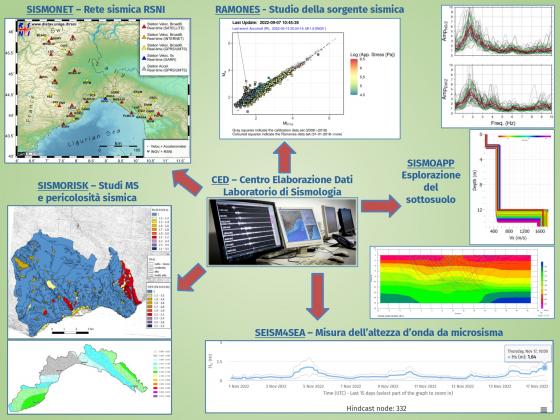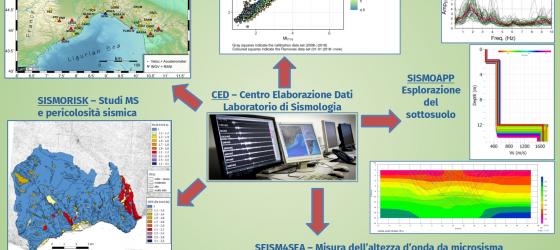Italy is a seismic Country and in the last thousand years it has been affected by over 300 earthquakes which have had destructive and often catastrophic effects.
Although it is not currently possible to predict with certainty when, with what strength and where the next earthquake will occur, it is absolutely necessary to invest in seismic prevention both to reduce the damage caused by a future seismic event and to be prepared to better manage a possible emergency.
For this purpose, it is essential to improve the knowledge of the phenomenon more and more through the monitoring of the territory and through specific studies aimed at the estimation of the seismic hazard and, in general, at the correct evaluation of the seismic risk.
As part of the topic, the researchers of the DISTAV Laboratory of Seismology carry out multiple research activities, including:
- SISMONET - Management and implementation of the seismic network of north-western Italy (RSNI, distav.unige.it/rsni) and installation of temporary seismic networks;
- CED - Near-real time seismic monitoring and warning services;
- SISMORISK - seismic hazard studies, theoretical and experimental analysis of local effects and seismic microzonation studies;
- RAMONES - study of the seismic source (determination of the seismic moment and of the radiated energy);
- SEISM4SEA - monitoring of the significant height of the sea waves in the Ligurian Sea from microseism;
- SISMOAPP - implementation and use of methodologies for the exploration and characterization of the subsoil through active and passive seismic techniques.
(G. Ferretti, D. Spallarossa, S. Barani, D. Scafidi, V. Capicchioni, M. Pavan)

